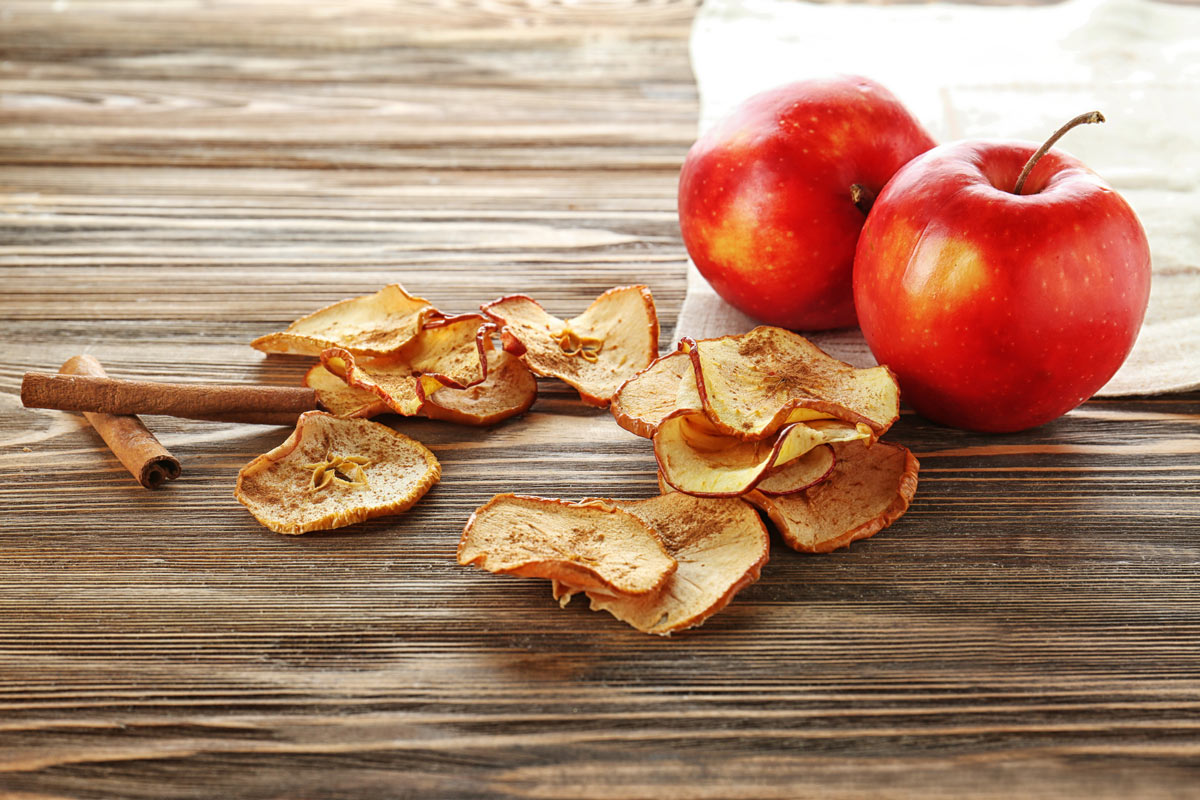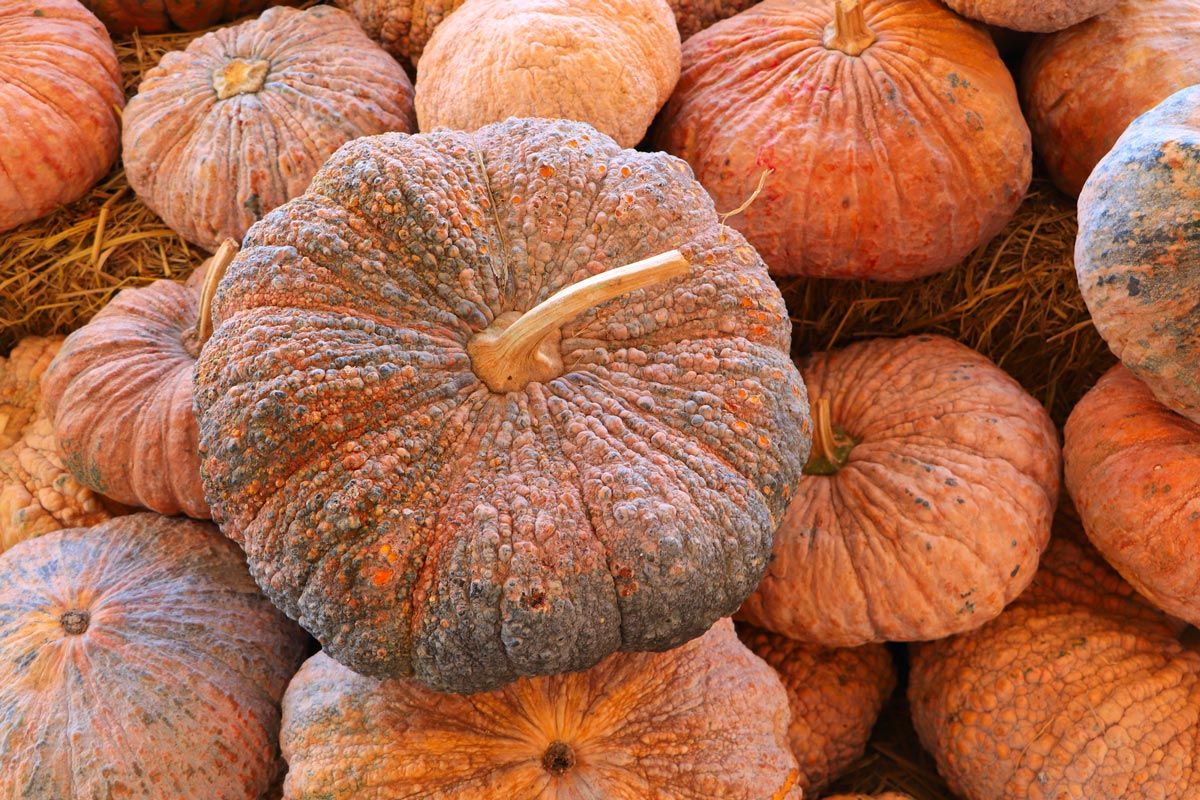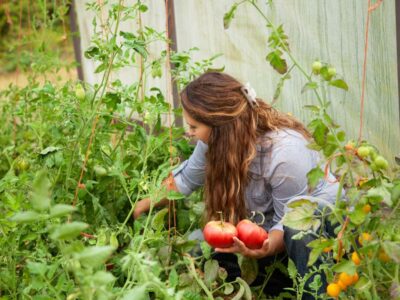What exactly are the differences between freeze-drying vs. dehydrating. Are there benefits that outweigh one from the other? Are there certain foods that should or shouldn’t be preserved by these methods? All this and more are below!
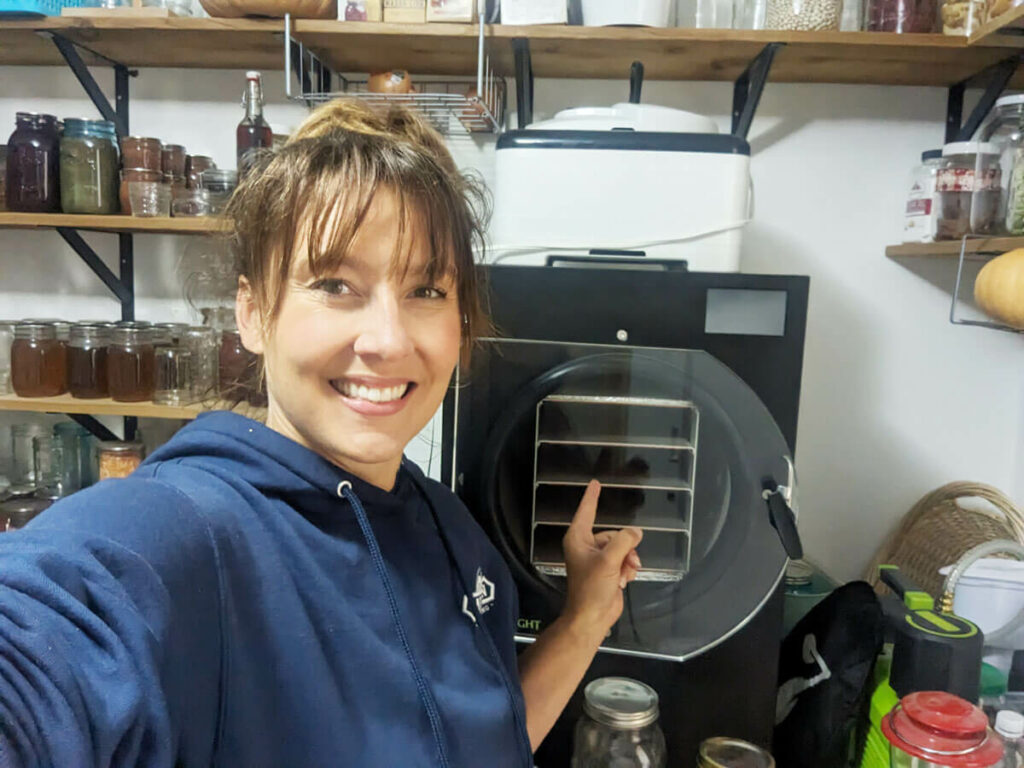
There are many ways to preserve food at home and I’ve discussed easy & fast preservation methods, as well as the best ways to preserve eggs, meat and dairy. But in today’s post and Pioneering Today Podcast (episode #395) I’m discussing the differences between freeze-drying and dehydrating different foods.
What’s the difference between these two methods of food preservation, which is better, are there certain foods that aren’t suited to these methods, and what are the benefits of each method.
Be sure to check out our other episodes of the Pioneering Today Podcast here.
Table of Contents[Hide][Show]
What is Freeze Drying?
Freeze-drying is a relatively new way to preserve food at home with a home freeze-dryer. Commercially freeze-dried food has been available for decades, but home freeze dryers have really picked up in popularity in the last ten years.
A freeze dryer is a two-step process of preserving food. It first takes food and freezes it into negative temperatures (about -40°F). At that point, the water content within the food is vapor.
Then, a pump kicks on and sucks the vapor and all the moisture out while simultaneously dehydrating the food.
The end product is a very different product from dehydrated food. So when it comes to freeze-drying vs. dehydrating, there are many differences. But that doesn’t always mean it’s better!
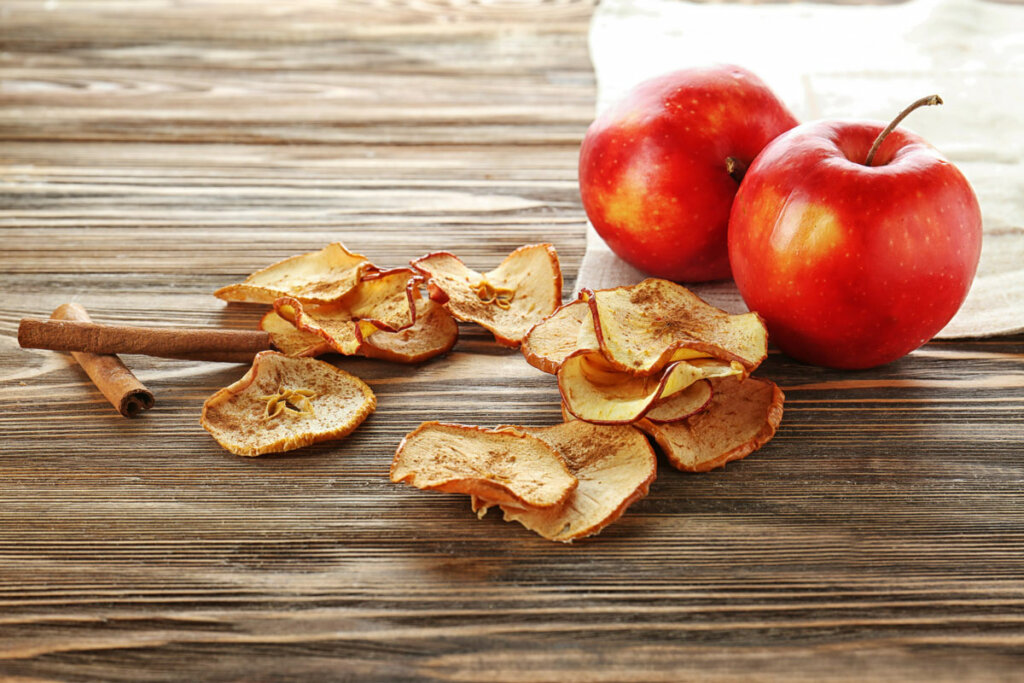
What is Dehydrating Food?
Dehydrating food is simply removing all the moisture content out of foods over a long period of time using elevated temperatures and airflow. Food can be dehydrated at various temperatures, but it’s important to know what temperatures are necessary for specific foods to stay safe.
Dehydrating Temperatures
While most herbs can be dehydrated safely at room temperature, you wouldn’t want to dehydrate meat at room temperature. Here are some basic temperatures for dehydrating various foods.
- Meat – 160°F
- Fruit – 125°F
- Vegetables – 135°F
- Herbs or Raw Foods – 95°F

Difference in Texture
Freeze-dried food will have a much different texture than dehydrated food. While many dehydrated foods get leathery, crispy or even chewy, freeze-dried food tends to be more brittle, crunchy and some foods could even be considered airy.
A dehydrated strawberry will end up as a chewy, almost leathery snack, while a freeze-dried strawberry will be crunchy and airy in texture. The dehydrated strawberry will shrink in size while the freeze-dried strawberry will maintain its same shape and size.

Foods That Can Be Dehydrated
Some foods can be successfully dehydrated and freeze-dried, so it will come down to a matter of preference. But there are definitely some foods that are better off when dehydrated.
- Cooked Meat (Jerky)
- Raw Vegetables
- Raw Fruit
- Cooked Eggs
The drawback to some of these dehydrated foods is that the texture, once reconstituted, isn’t like the fresh version. Many freeze-dried foods maintain the same texture once reconstituted (I really notice this with dehydrated vs freeze-dried vegetables).
Foods That Cannot Be Dehydrated
- Raw Meat
- Raw Eggs
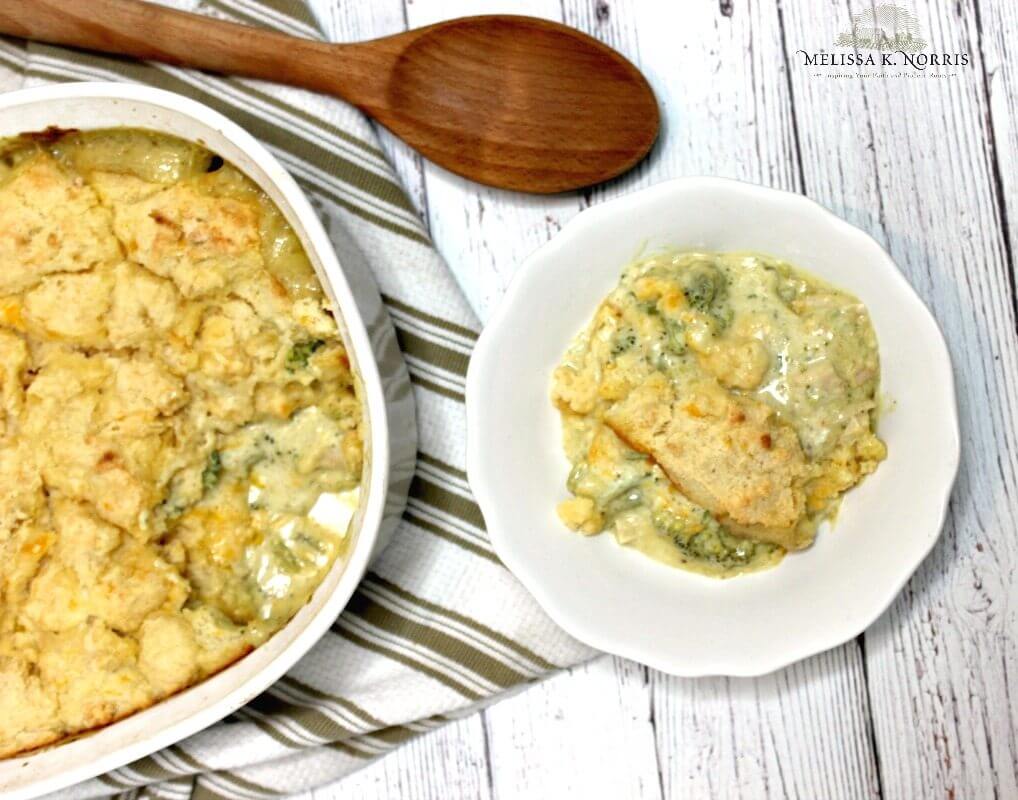
Foods That Can Be Freeze-Dried
As I mentioned, some foods are a matter of preference when it comes to dehydrating or freeze-drying. However, some foods simply cannot be safely dehydrated and must be freeze-dried (or preserved another way).
One of the main differences with freeze-dried foods is that those foods that must be cooked to be safely dehydrated can be freeze-dried in their raw state. After rehydrating those foods, they must be cooked to be considered safe to consume.
Foods That Can Be Freeze-Dried
- Raw & Cooked Meat
- Raw & Cooked Eggs
- Raw & Cooked Veggies
- Raw & Cooked Fruit
- Milk/Ice Cream
- Coffee/Hot Chocolate (check out my freeze-dried hot chocolate recipe here)
- Candy (only certain kinds)
- Leftovers
- Soups/Stews

Foods That Should Not Be Freeze-Dried
There are certain foods that should not be freeze-dried. These are items that have a higher fat content such as bacon, fatty meats, butter, etc.
The fat in these foods is very dense and doesn’t freeze dry well. That doesn’t mean it can’t be done, however, the shelf-life of these products will be much shorter.
In my opinion, most of the fattier foods are better off frozen for long-term storage.
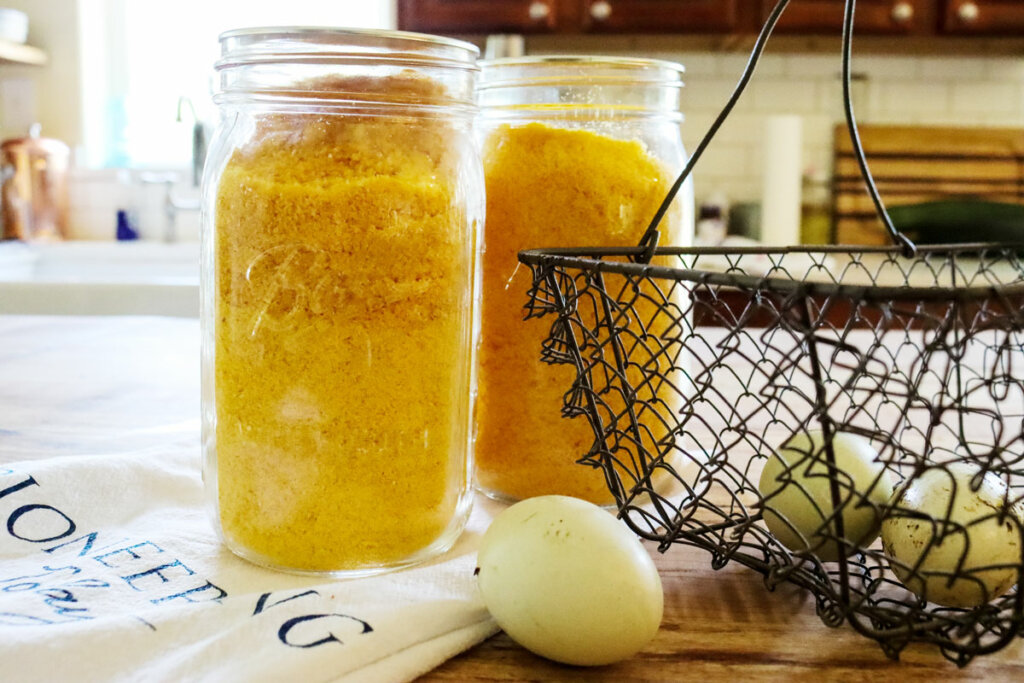
Storing Freeze-Dried and Dehydrated Foods
When it comes to storing freeze-dried and dehydrated foods, the method is very similar. You want to store them in air-tight containers where they don’t have exposure to oxygen or moisture.
Any exposure to air will reintroduce moisture and can cause the texture to change or even cause spoilage.
My go-to method for storing freeze-dried and dehydrated foods is in a canning jar with a lid. I then use a vacuum sealer to seal the jar, and I store them with the ring on. (This is the opposite of what’s recommended for canned foods, as you don’t want to store canned food with the rings on.)
Pro Tip: If it’s a food that I want to last on the shelf for more than six months, I’ll add an oxygen absorber. But if I’m going to consume it within six months, I don’t bother adding one.

Azure Standard
Today’s sponsor of the podcast is Azure Standard, and that’s actually where I get all of my oxygen absorbers and mylar storage bags. If you’re new to Azure Standard, they’re offering 10% off your first order of $50 dollars or more. Simply use coupon code “Melissa10” to get 10% off your order.
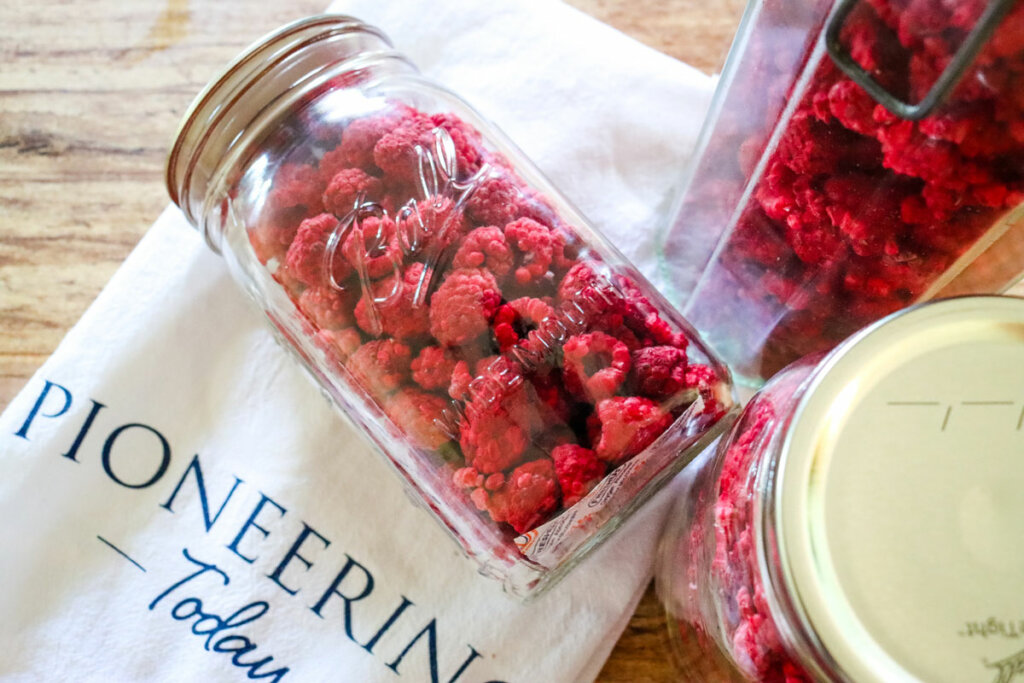
Benefits of Freeze-Drying
Health
Of all the forms of food preservation, freeze-dried foods retain the most nutrients when compared to fresh (even above dehydrated).
You do want to make sure to adjust the dehydrating temperature when freeze-drying foods to maintain their raw state (like medicinal herbs), but the beauty is you can do this by adjusting the settings.
Versatility
One of the main benefits of freeze-drying is the versatility of what can be freeze-dried. I love using my freeze-dryer for leftovers.
For example, if I make a large lasagna and my family only eats half of it, I can divide it up into serving portions and dehydrate it. Then I have shelf-stable lasagna that can be reconstituted and eaten anytime in the next 25 years!
And the end product is versatile. I can add freeze dried zucchini to soups, stir-fries, baked goods, or even make zucchini flour out of it.
Taste
One of the things I have noticed personally with dehydrated vs. freeze-dried foods is when it comes to fruit. Dehydrated fruit tends to get much more concentrated in flavor and sweetness. Freeze-dried fruit tends to taste exactly like the fruit when it’s fresh.
So for me, I generally prefer to freeze-dry all our fruit, with the exception of my very favorite dehydrated cherries!
Ease
With a freeze-dryer, you can add the trays to the freeze-dryer, hit a few buttons and walk away. The freeze-dryer will hold the food at a certain temperature until you’re able to check it to ensure it’s completely freeze-dried.
A dehydrator, however, needs to be checked frequently, you risk over-dehydrating smaller pieces of food before the larger pieces are completely dry, and you usually have to shift trays around to get things to dry evenly.
Foods
There are certain foods that can only be freeze-dried and still be shelf-stable at room temperature.
Items such as mashed potatoes or pureed pumpkins aren’t safe for water bath canning, pressure canning or dehydrating. Other than freeze-drying, there is no safe method of preservation for these foods where they are shelf-stable. Yes, they can be frozen, but that takes precious freezer space, and it isn’t shelf-stable.
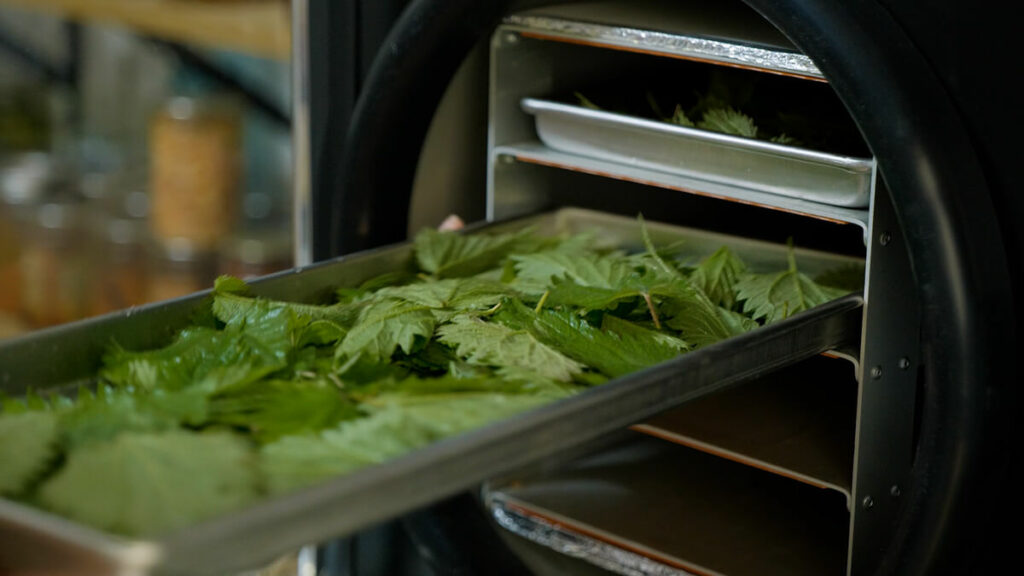
Disadvantages of Freeze-Drying
Cost
The main disadvantage when it comes to freeze-drying that I hear often is the cost. The freeze-drying machines are expensive (starting at just over $2,000 at the time of this publication), making them unobtainable for many.
I get asked frequently if a freeze-dryer is worth the cost, and my answer is always it is, if you’ll use it! If it sits on the shelf and doesn’t get used, however, I’d say your money is better spent elsewhere on the homestead.
Heavy & Space
A freeze-dryer is a large unit and too heavy for one person to move. Therefore it needs a solid surface where it will stay. It also needs to be run on a dedicated 220 line.
The freeze-dryer also must be elevated so the drain can function properly.
Noise
A freeze-dryer is much louder than I thought it would be. It’s not like the gentle hum of a dehydrator. Though it’s not quite as loud as a vacuum cleaner, it’s on the same level as that, in my opinion.

Benefits of Dehydrating
Space
One of the benefits of dehydrating foods is that the finished product takes up much less space than the fresh food did.
This isn’t the case with freeze-dried foods. They take up the same amount of space. So if I freeze-dry half a gallon of milk, I’m going to need that same half-gallon container to store the freeze-dried milk in.
Likewise, a quart of freeze-dried raw eggs will be stored in a quart-sized jar.
Time
One of my biggest surprises when I got my freeze-dryer, was the amount of time different foods take to be freeze-dried. I thought many foods would be much faster than they are.
Herbs, for example, can be dehydrated much faster than they can be freeze-dried.
Though most foods take approximately the same amount of time for freeze-drying as they do for dehydrating, there are some exceptions.
Food Specific Items
There are certain foods that are only made through dehydration. I’m talking about homemade fruit leather and homemade jerky! There are simply no freeze-dried options!
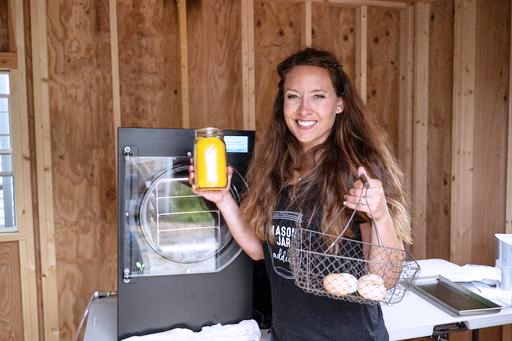
Harvest Right
The freeze-dryer that I have is a Harvest Right and I have the medium size. At the time of this publication, they’re having one of their largest sales of the year where you can get $500 off a machine through the end of June 2023! That’s nearly 25% off.
If you’ve been wanting a freeze-dryer, now is a great time to get one!
Verse of the Week: John 21:20-22
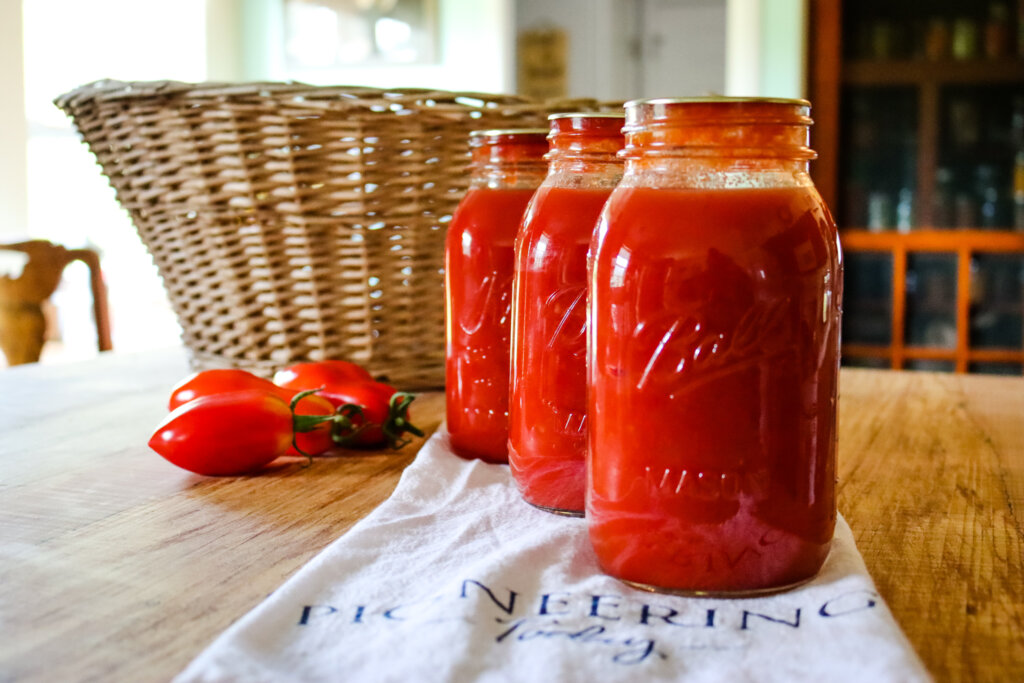
More Articles on Home Food Preservation
- Must-Know Freeze Drying Tips (With Carolyn Thomas)
- The Science of Home Food Preservation
- Tips for Home Food Preservation – Seasonal Preserving Each Month
- A Complete Guide to Home Food Preservation (What to do When You Can’t Find Canning Supplies)
- 9 Ways to Preserve Food at Home
- How to Store Home Canned Food Safely – Jar Stacking & Canning Rings
- How to Pick the Best Preserving Methods
[fusebox_transcript]
